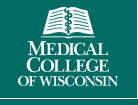Photodynamic Therapy for Benign Dermal Neurofibromas
| Status: | Recruiting |
|---|---|
| Conditions: | Cancer, Other Indications |
| Therapuetic Areas: | Oncology, Other |
| Healthy: | No |
| Age Range: | 14 - 30 |
| Updated: | 8/31/2018 |
| Start Date: | August 2016 |
| End Date: | August 2023 |
| Contact: | Harry T Whelan, MD |
| Email: | hwhelan@mcw.edu |
| Phone: | 414-266-7540 |
Topical Photodynamic Therapy (PDT) With Levulan® Kerastick® for Benign Dermal Neurofibromas Phase II
The investigators wish to determine the time to disease progression for benign neurofibromas
treated with Levulan Kerastick topical photosensitizer and red light photodynamic therapy
(PDT) in patients with neurofibromatosis type 1 (NF1).
The investigators also wish to measure tumor size for control and treatment tumors in order
to gain insights into tumor growth rates.
treated with Levulan Kerastick topical photosensitizer and red light photodynamic therapy
(PDT) in patients with neurofibromatosis type 1 (NF1).
The investigators also wish to measure tumor size for control and treatment tumors in order
to gain insights into tumor growth rates.
Neurofibromas contain a large quantity of fibrous matter, and it is not anticipated that
significant reductions in tumor size can be achieved in large, long established, tumors.
Cutaneous neurofibromas, which do not usually become apparent until puberty, continue to
increase in size and number throughout adulthood. The psychosocial burden of these
disfiguring tumors is significant, and the targeted age group (14-30) is at a life period
associated with an acceleration in tumor growth. It is for these reasons that the
investigators hope to affect the growth rate of less established tumors, in order to prevent
or lessen this burden as the patient progresses further into adulthood.
Therefore, the investigators wish to determine the time to disease progression (defined as
50% growth in size over baseline) for benign neurofibromas treated with PDT in patients with
neurofibromatosis type 1 (NF1) in subjects aged 14-30.
The treatment will consist of choosing several neurofibromas of similar size, and applying a
topical drug called Levulan, or just the topical application alone (a placebo). After 1 day,
the neurofibromas will be illuminated with red light (both Levulan and placebo). The Levulan
is what is known as a photosensitizer, and will be activated by the red light to potentially
kill some of the tumor cells. Every 4 months after, for three years, the tumors will be
measured to see if they are growing more slowly than the ones with the placebo application
alone.
significant reductions in tumor size can be achieved in large, long established, tumors.
Cutaneous neurofibromas, which do not usually become apparent until puberty, continue to
increase in size and number throughout adulthood. The psychosocial burden of these
disfiguring tumors is significant, and the targeted age group (14-30) is at a life period
associated with an acceleration in tumor growth. It is for these reasons that the
investigators hope to affect the growth rate of less established tumors, in order to prevent
or lessen this burden as the patient progresses further into adulthood.
Therefore, the investigators wish to determine the time to disease progression (defined as
50% growth in size over baseline) for benign neurofibromas treated with PDT in patients with
neurofibromatosis type 1 (NF1) in subjects aged 14-30.
The treatment will consist of choosing several neurofibromas of similar size, and applying a
topical drug called Levulan, or just the topical application alone (a placebo). After 1 day,
the neurofibromas will be illuminated with red light (both Levulan and placebo). The Levulan
is what is known as a photosensitizer, and will be activated by the red light to potentially
kill some of the tumor cells. Every 4 months after, for three years, the tumors will be
measured to see if they are growing more slowly than the ones with the placebo application
alone.
Inclusion Criteria:
1. Patient is 14 years or older.
2. Diagnosed NF1, determined by American Academy of Neurology Guidelines (see Diagnosis
section).
3. Tumor Location: cutaneous, trunk, or limbs only.
4. Tumor Type: superficial dermal neurofibromas ≤4mm deep.
5. Patient has provided written informed consent.
6. Patient is willing to and can comply with study follow-up requirements.
7. Absence of any other malignancy.
Exclusion Criteria:
1. Life expectancy less than 3 years.
2. Pregnancy.
3. Cutaneous photosensitivity to the wavelengths used to active PDT.
4. A diagnosis of porphyria.
5. Allergy to aminolevulinic acid or any of the topical solution vehicle components.
6. Previous chemotherapy within 6 weeks of proposed PDT.
7. Other concurrent tumor therapy.
We found this trial at
1
site
8701 W Watertown Plank Rd
Milwaukee, Wisconsin
Milwaukee, Wisconsin
(414) 955-8296

Phone: 414-266-7540
Medical College of Wisconsin The Medical College (MCW) of Wisconsin is a major national research...
Click here to add this to my saved trials